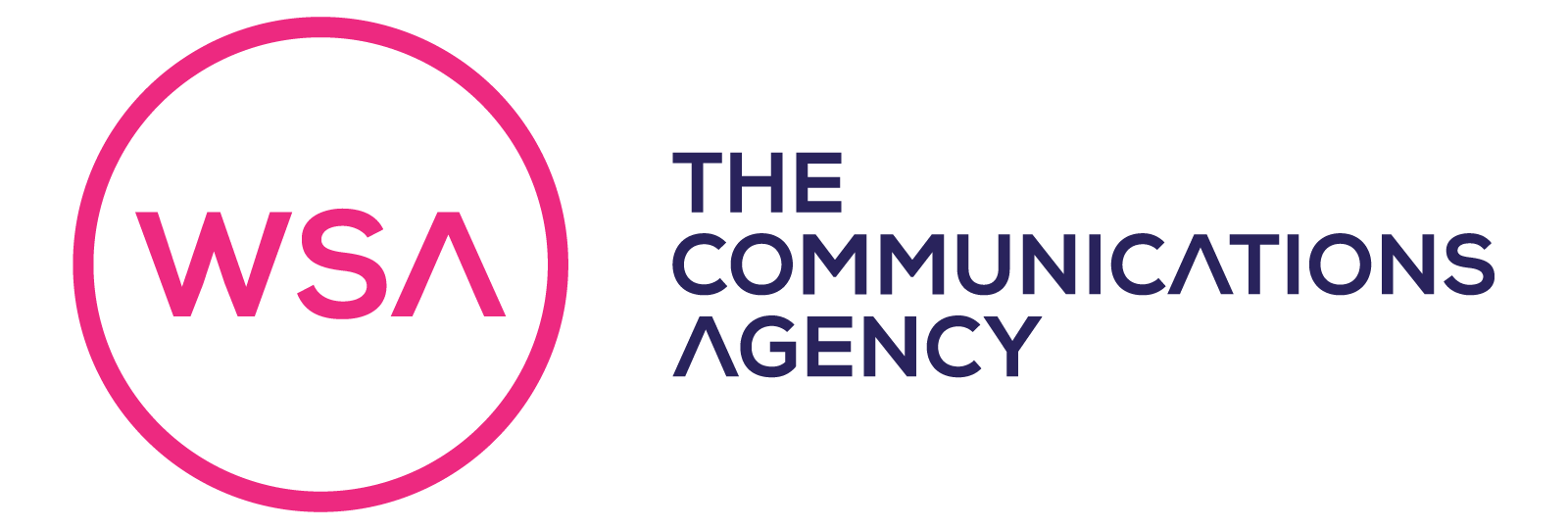For the uninitiated, advertising on social media can feel overwhelming. You might be wondering, where do I start? How do I know which social media platforms reach my target audience? Should I advertise on Facebook or Tik Tok? Twitter or LinkedIn? Snapchat or Spotify?
Fear not. Our team of experts work on all of these channels every day and have compiled a set of Top Trump’s style infographics to outline the pros and cons for each. We have listed the type of audience you can typically expect to engage with, the key age ranges the platform appeals to most, the minimum spend you need to get an advertising campaign underway and how many users you have a chance of reaching when you click the button to go live.
Use these free resources below to navigate through the social media minefield and hopefully, the right platform for your needs will become clear. Check them out below…
Facebook Ads, Instagram Ads and Facebook Retargeting
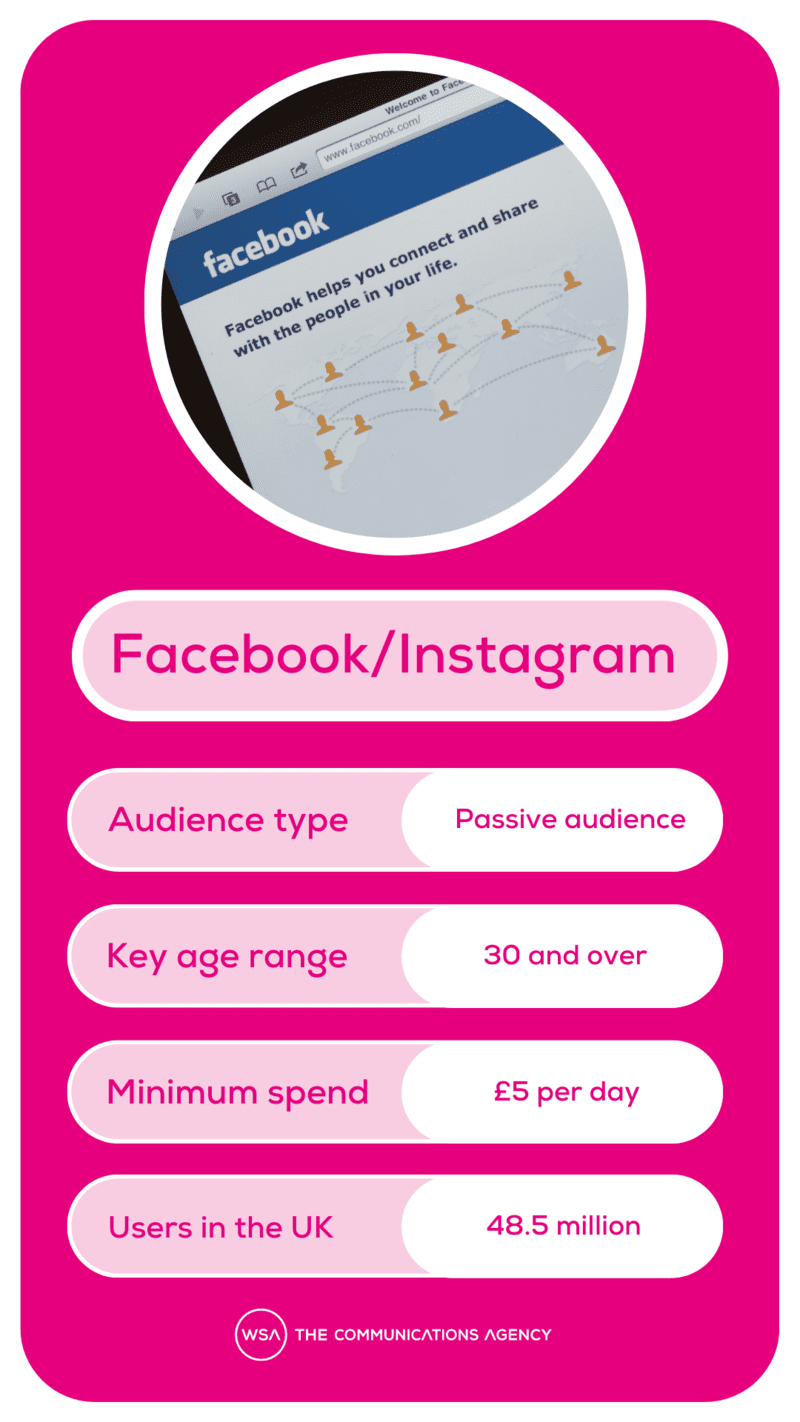
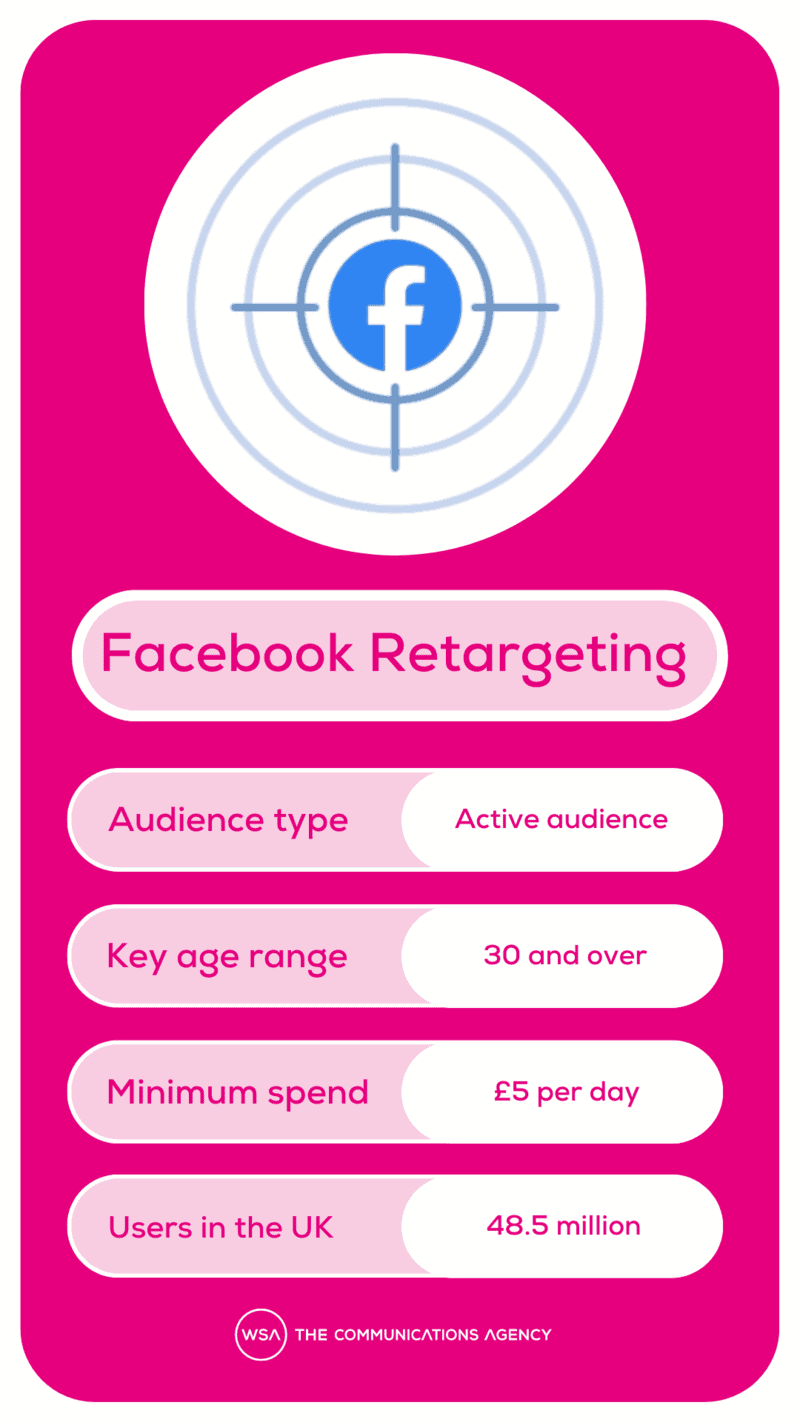
Targeting on Facebook and Instagram has seen a few changes over the last 6 months, and with these updates, marketers have had to make amendments to the way both platforms are used for advertising. They are still great for brand awareness campaigns, but can also be used for targeted needs like student intake for schools or selling products to specific demographics.
Facebook Retargeting is a great tool for targeting active users that have previously visited a page on your website but did not complete any action. In these scenarios, technology ensures the potential customer will receive a targeted ad when they next visit Facebook, which will hopefully encourage them to re-visit your website and complete their journey.
Google Search Ads
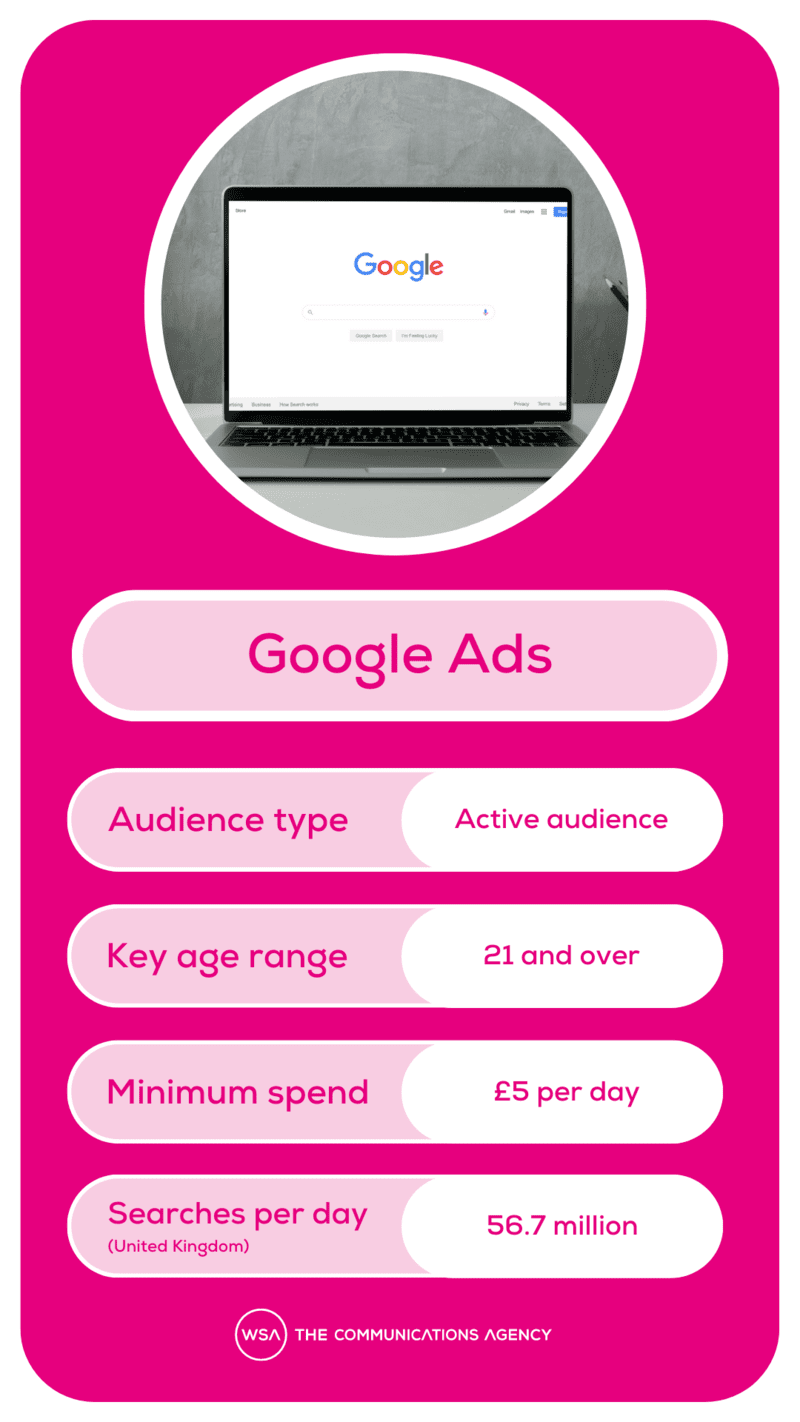
Arguably the most well-known and commonly used advertising platform, Google Ads sees on average 56 million searches take place each day in the UK alone. For active audience targeting, this is almost always the best platform to be using.
Allowing you to add relevant search terms to your ads, Google Search Ads provides the text advertising that you recognise from the top of the Google Search page. These ads can be used for any type of advertising, from recruitment to driving sales on your website.
Google also has various other advertising options including a dedicated portal for Shopping as well as Display advertising, which differ from search ads slightly. The shopping ads platform depicts the ads you see at the top of your Google Search, with imagery linking through to specific products; whereas display adverts are the banner ads we all see displayed on and around websites and video streaming services, far more visual but still linking through to a certain landing page.
YouTube Ads
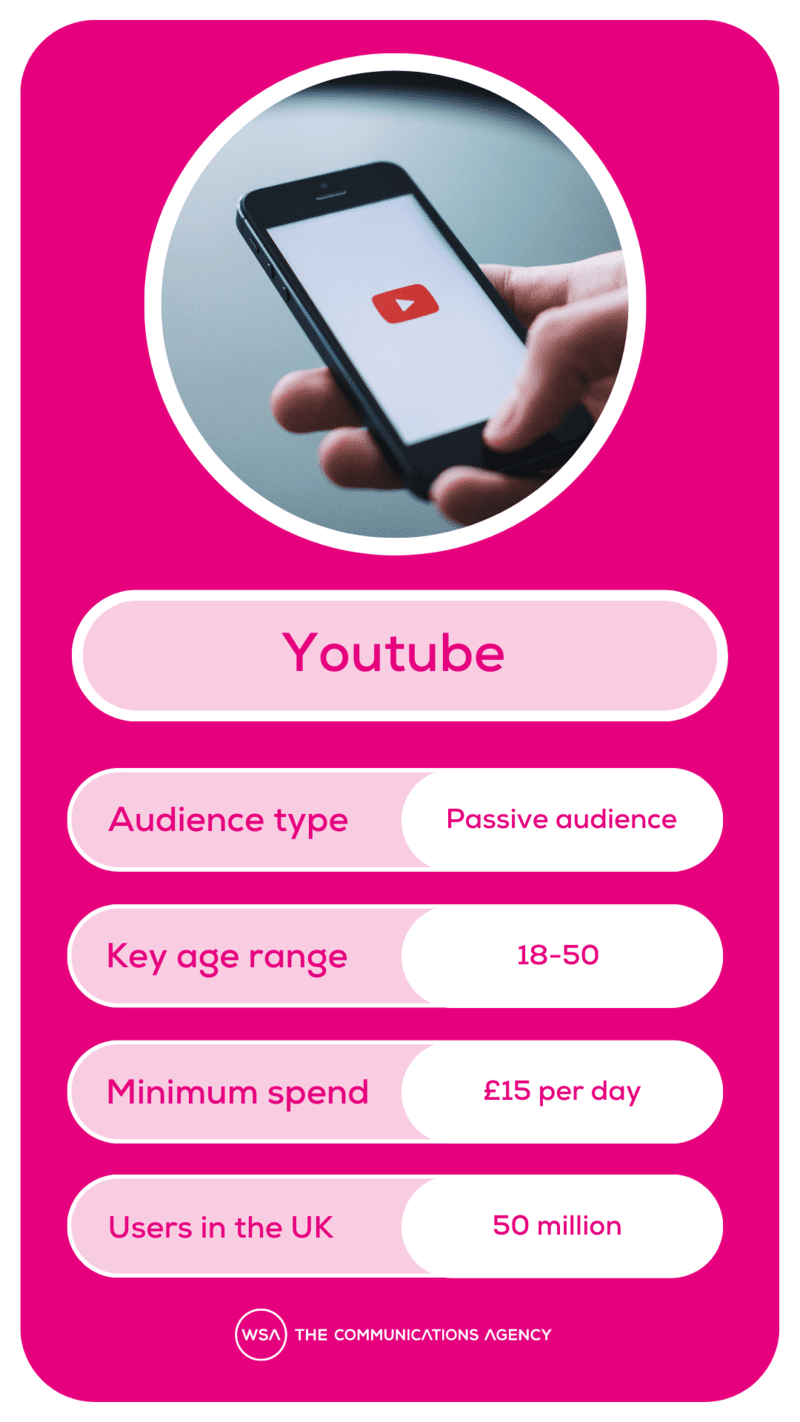
YouTube advertising also comes under the Google Ads umbrella but deserves a Top Trumps card all of its own, as it is a great advertising platform for a passive audience. Experts feel that video remains a brilliant investment for lead generation, with around 86% of video marketers saying video has been effective for generating leads.
With a recommended ad budget starting from £15 per day, it’s not the cheapest platform to advertise on, however with several different advertising options (In-stream ad, non-skippable ads and bumper ads) there is something for everyone’s budget when exploring advertising on YouTube.
Twitter Ads
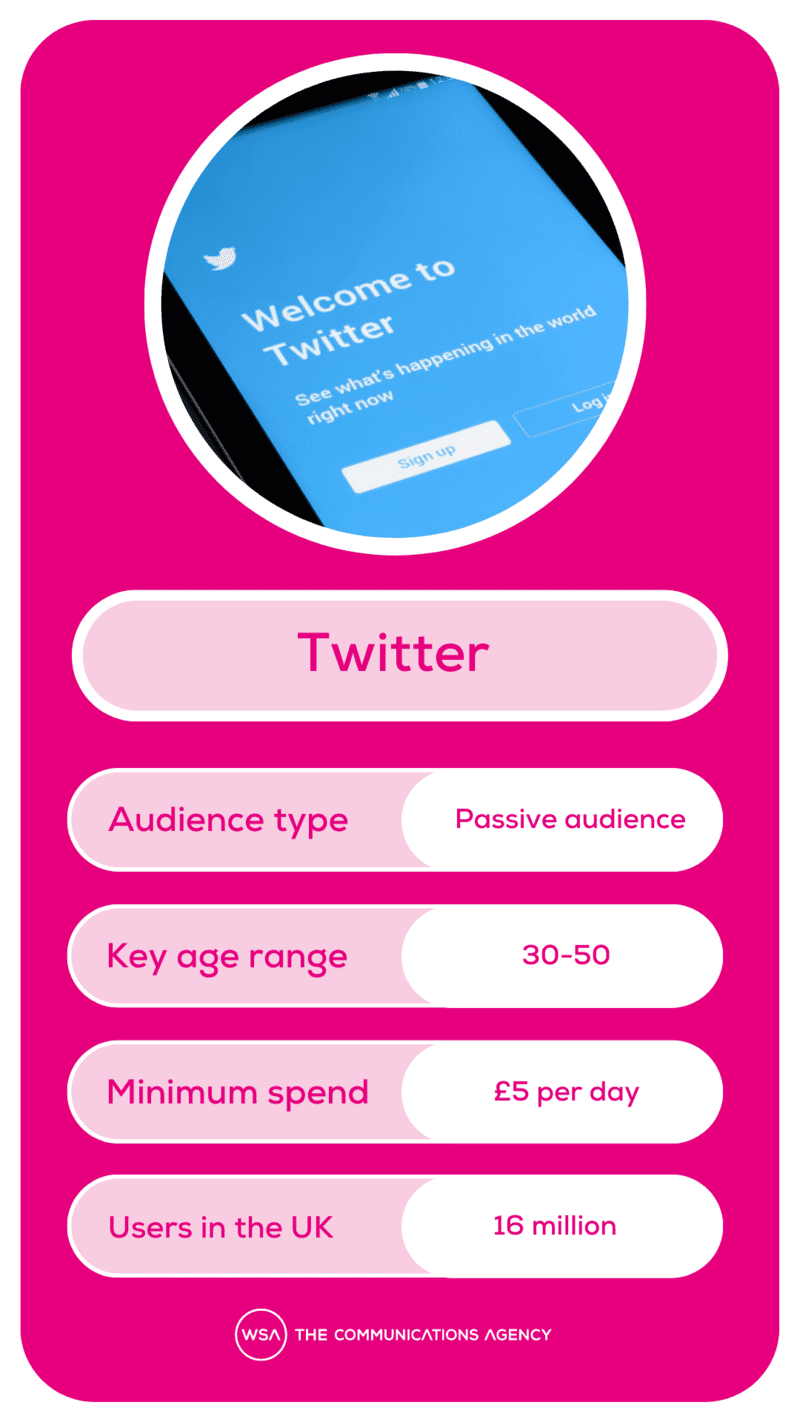
Twitter is often seen as the most controversial platform concerning the content that is organically shared (rather, tweeted) into the channels platform, widely due to its fast-paced nature and character limits, meaning that people often tweet several sweeping statements rather than expanding on the context.
Directly in terms of advertising, Twitter still sees some great results for specific industry engagement, such as nurse and healthcare recruitment. There is a large nurse following on this platform thanks to the ability to join wider sector conversations and share thoughts in community-driven conversations. This is similar for other sectors too such as education. With the ability to target advertising based on follower look-alikes, meaning that we can select other Twitter profiles and target users that follow these profiles as an audience we often see great results from these campaigns.
Now that Elon Musk has bought Twitter for $44 billion, more change can be expected on the platform in future and only time will tell what this means for advertising opportunities.
LinkedIn Ads
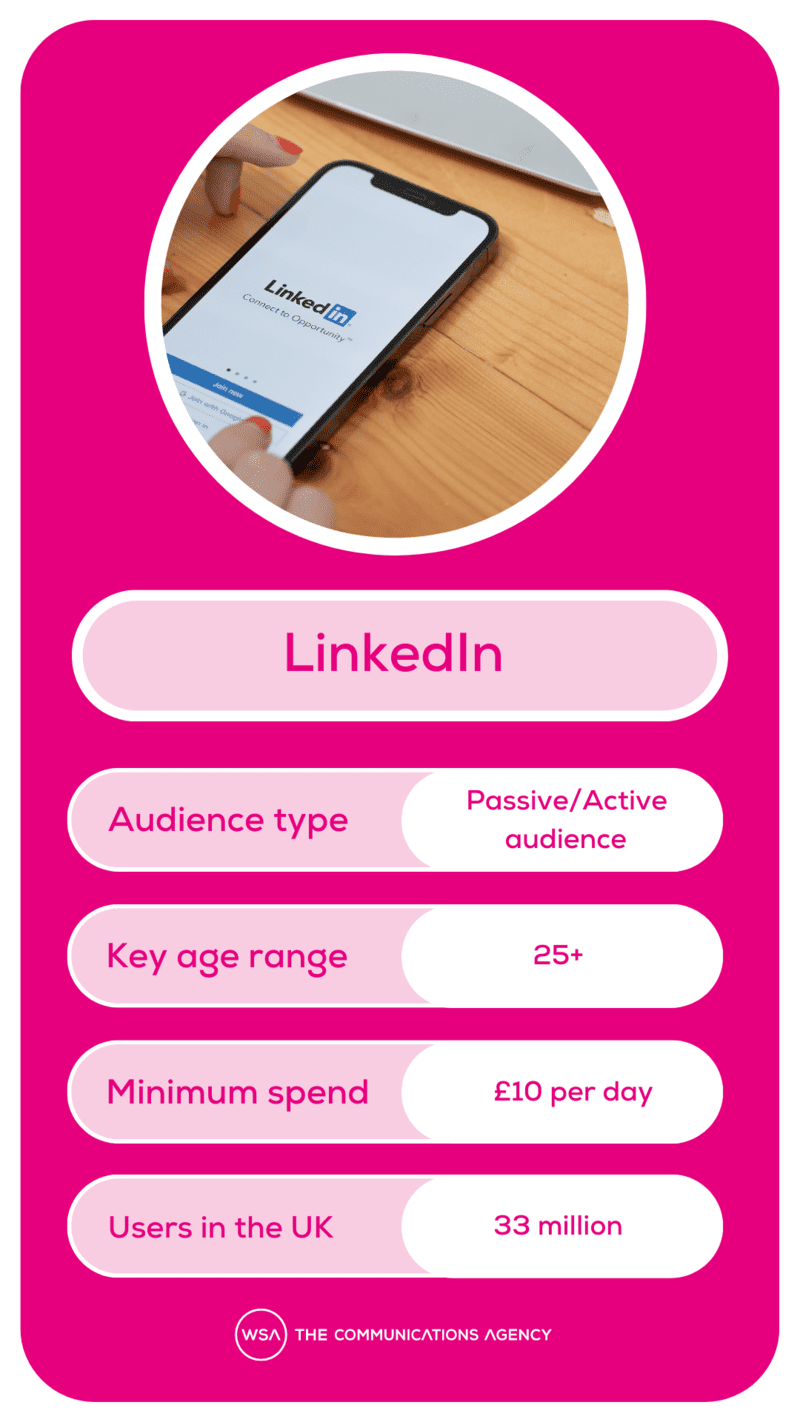
With a user count of 33 million in the UK and growing, LinkedIn is the best choice for advertising if your demographic is working professionals. Some have voiced concern that the content of LinkedIn has become more personal and less formal over time, but the structure of the site which sees profiles read like short-form digital CVs opens the door to many insightful opportunities.
Within LinkedIn ads, you can target based on job title, member skills, industry and more, meaning that we can serve targeted ads to a specific demographic. LinkedIn ads are slightly more expensive, and you won’t see the huge vanity statistics (impressions and reach) that you often do with the likes of Facebook, however, the leads that are received through LinkedIn are generally more qualifiable due to these advanced targeting options.
Spotify Ads
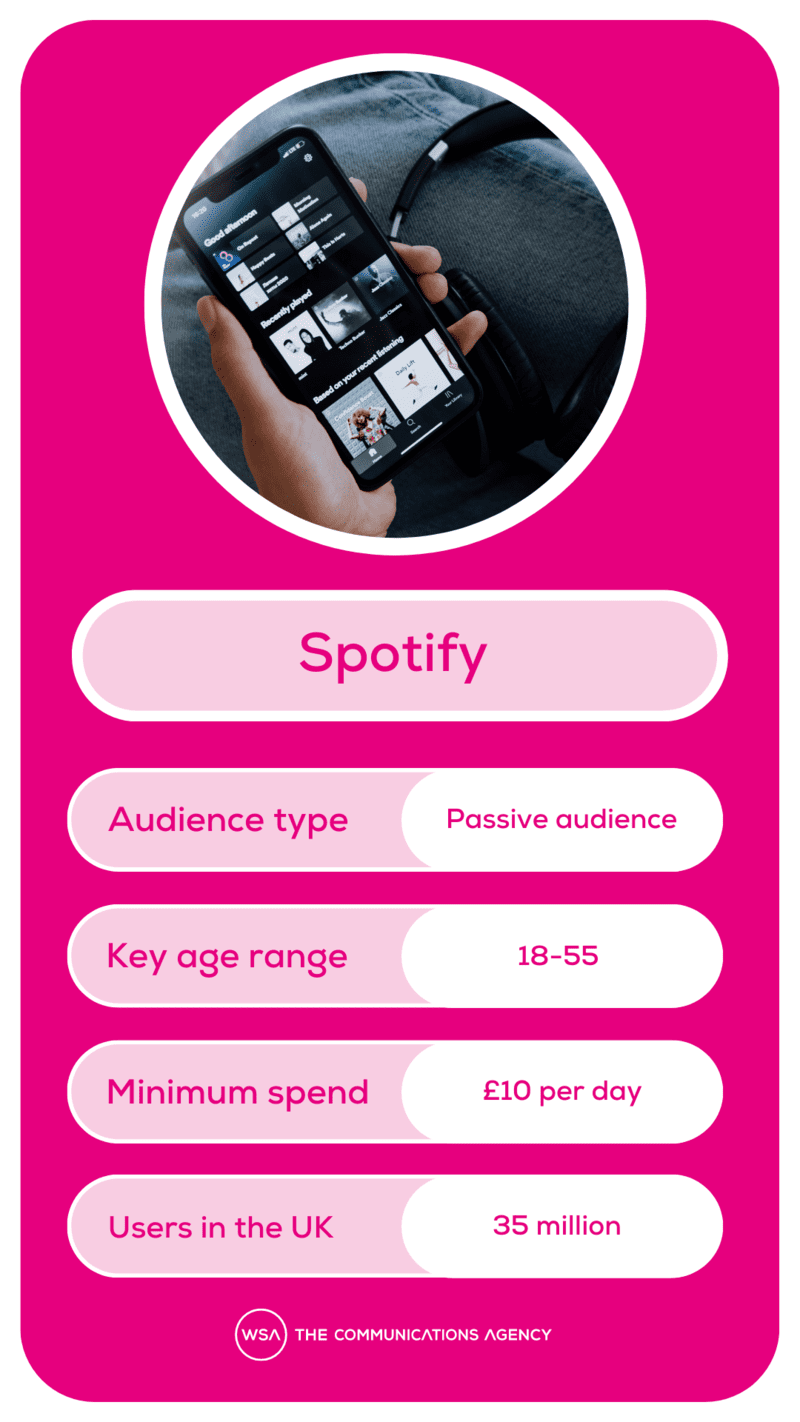
Spotify changed the game as a popular music listening and sharing platform, effectively ending the era of the iPod. With the ability to make and share your own playlists with friends, its target audience is wide and its user pool is around 35 million in the UK alone.
Spotify ads come in two different forms, you can upload a script which is read out by an AI voice in-between songs, or you can include a video which is played between tracks. With its ‘radio for the next generation’ connotations, we have found Spotify a very useful advertising platform for student intake, especially Sixth Form students. It can also be great for wider brand awareness or promoting a time-sensitive product or upcoming event.
TikTok Ads
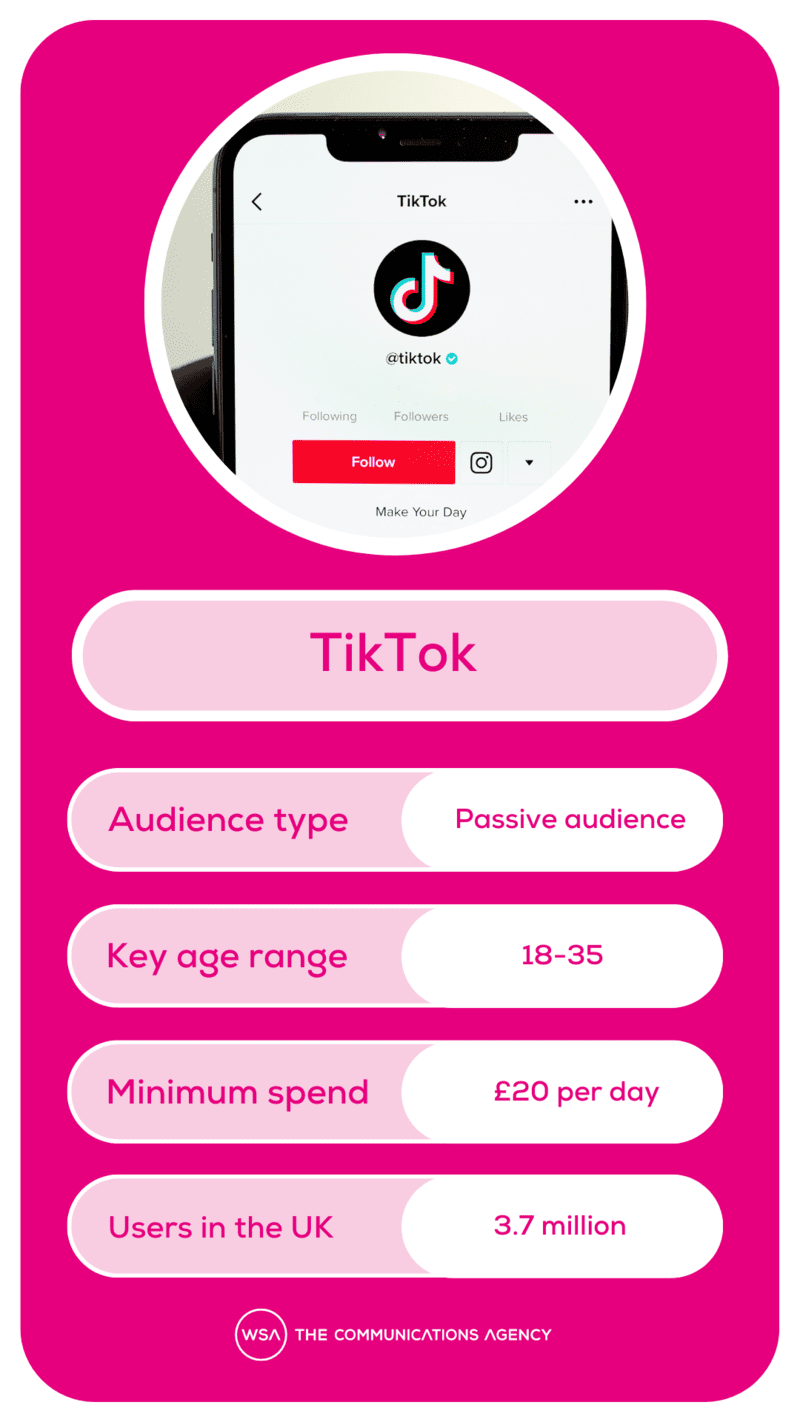
Saving the best for last, TikTok is a platform that has absolutely taken the world by storm. With over 3.7 million users in the UK already and growing fast, the average daily time spent on the app is 41 minutes. This kind of engagement means advertising on TikTok is quickly becoming something that no marketeer can afford to ignore.
Within the platform, you can create videos or upload existing content, giving total freedom. It is also worth noting that you/your company do not need a TikTok account to start advertising. The minimum spend currently is £20 a day, which is notably higher than other platforms, however, this is predicted to be reduced over the next 12 months.
Found this info helpful? Check out some of our other blogs for a more in-depth look into the features of Instagram and the latest content opportunities available on Tik Tok.
Want to know something else about paid digital? Drop us a message and let’s talk!
